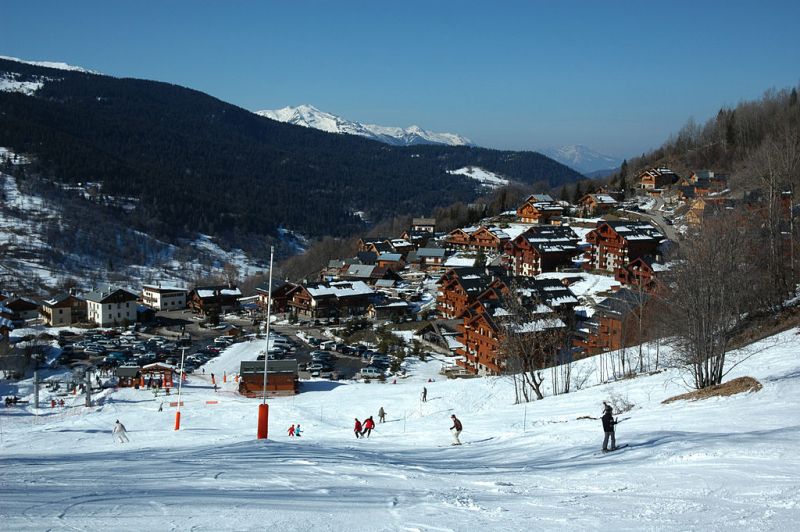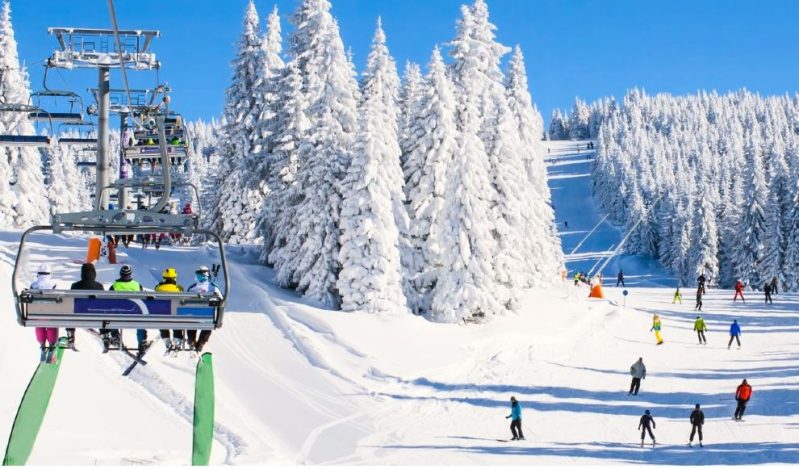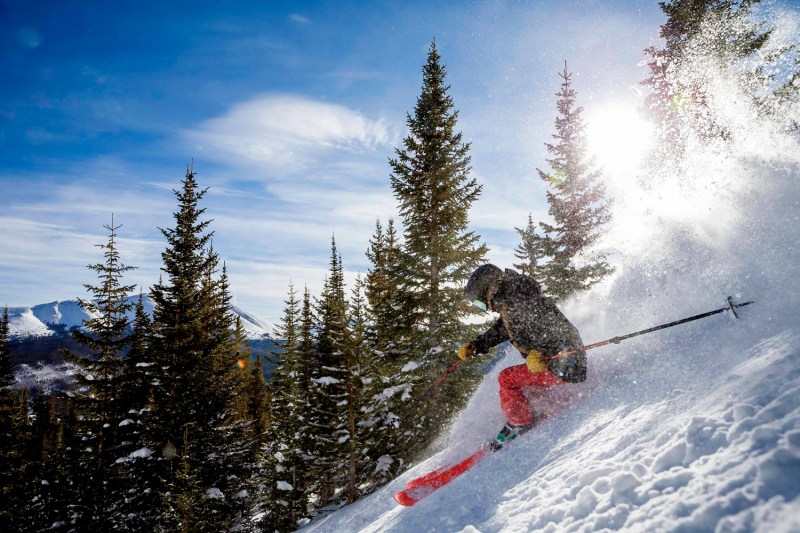Just like a map is essential on a hiking trail in the summer, the winter trail map is your guide to not getting lost on the mountain this winter. The first thing most skiers and snowboarders do when they turn up to a new ski resort is to get hold of a trail map and earmark some ski trails they want to explore. If you’ve got a holiday booked and coming up soon, you might already be looking online to get your bearings on the ski area — but do you really know what you’re looking at?
Ski slopes are broken up into different difficulties and marked on the map using different colors. Experienced skiers may be able to glance at this map and know where they’re headed — they’re probably able to tackle most of the slopes, too — but skiing for beginners is hard enough without adding map reading into the mix.
But each mountain is unique, and the trail ratings are subjective to the mountain they’re a part of. It’s not so black and white as it might seem, which can pose serious safety risks for the novice skier or snowboarder.
So what can trail ratings tell me before I drop in?

Are all ski trail ratings universal?
Mountains differ drastically across North America, and ratings shouldn’t be any different. We’re not saying that trail ratings aren’t accurate — greens are for beginners, blues are for intermediates, and so on, but a black diamond at Bear Creek in the Poconos is going to be much, much different from a black diamond at Alta in Utah.
So, purely from a safety standpoint, be skeptical of trail ratings. Before throwing all the chips on the table and shredding a black diamond off the rip, take a warmup lap on a blue square. Worst-case scenario, you get a boring warmup lap in and know what to expect when going down a more advanced run.

Bunny slope
The bunny slope: skiing and snowboarding for beginners. This is where you take your first turns, where you get used to clipping yourself into your ski or snowboard, and where you can fall over safely without having experienced riders ripping it past you. Let’s face it, when you’re learning, you need a safe space away from high-speed skiers and snowboarders. And as a beginner, you’re likely to make some, let’s call them erratic, turns that take you across the slope.
The bunny slope is in itself a green run, but we think it deserves its own section. The bunny slope is a sanctuary, not a slope. It usually has either a magic carpet or a button lift up the side rather than a full chairlift, and that’s because they’re usually only a couple of hundred meters long. They’re a gentle gradient, with enough width and length for you to learn your turns without overcommitting to a long trail.

Green slopes – beginner
Once you’ve mastered your turns and are ready to spread your wings beyond the bounds of the bunny slopes, your next step would be the green slopes. These slopes have the same gradient as the bunny slope and are generally at less than 25% gradient, making them slow and gentle. Add to that the fact that they’re often wide — especially in any sections that push that gradient boundary — and you’ve got the ideal setting to take what you learned on the bunny slope and progress it.
But don’t think for a minute that green slopes aren’t a great way to explore the slopes. In fact, plenty of ski resorts understand that one of the first things you want to do is get some altitude and enjoy the view. Plenty of beginner-friendly ski resorts have green slopes that run all the way from the top to the bottom of the mountain. Because of their mellow nature, these runs have to weave and wind their way down the mountain, and many of them make you feel like you’ve been on a journey around the mountain.

Blue runs – intermediate
The vast majority of skiers and snowboarders find that they’re at their happiest on a blue run. These slopes are somewhere between 25% – 40% in gradient, often made up of steeper and mellower sections. Some blue runs will feel like a green slope with a steep section, while others will feel like they’re touching on being allocated a black grading. For that reason, European and Japanese ski resorts also include a red grading, equal to a hard blue/easy black in the U.S.
When you’re a confident skier or snowboarder, blue runs are your cruising runs. They’re the groomers that can carry you around the entire mountain, connect together steeper runs — if that’s your thing — or be your entire ski day. Blue runs are often the last runs that are groomed in resorts, depending on the style of black runs.

Black runs – advanced
Black diamonds are reserved for the advanced skier — someone who considers blue squares gravy and is looking for steeper, more risky terrain, but not willing to go gung-ho just yet. These trails are most difficult, remain relatively ungroomed throughout the season, incorporate moguls, rocks, bumps, tighter tree trails, and glade sections, and have a steepness grade of 40% or more.
The mistake a lot of skiers and snowboarders make is thinking that because they’re confident cruising on a blue run, they can tackle a black run. Blue runs have a very different feel to black runs, and your best way to make the transition is to find a ski resort with either a consistently steep blue run — that verges on 40% the whole way — and make narrow turns, staying in control as you do.

Double black diamond – expert
For most of the resorts across the U.S. and Canada, double black diamonds are about as difficult as they come. Reserved for expert skiers and snowboarders, double black diamonds are usually the steepest and most technically challenging terrain on the whole mountain. Ungroomed throughout the season, double black diamonds pose a high risk of injury due to the inclusion of rocks, cliffs, trees, narrow chutes, and other natural features, as well as consistently greater than 40% steepness gradient.
These trails aren’t for the faint-hearted skier or snowboarder, and plenty of them have to be “in condition” to be worth skiing. But if they are in condition, and you’re up to the challenge, some of the best snow and most enjoyable terrain on the mountain can be found in places you can only reach by skiing a double black diamond run.

Triple black diamond – expert only
Confidence and commitment are the two words that come to mind when I think of triple black diamonds. As the rarest and most gnarly marked terrain one can ski or ride, triple black diamonds are the crème de le crème when it comes to extreme terrain. Boulders, chutes, cliffs, trees, moguls, bumps, and mandatory airs are just some of what’s expected when skiing a run like this. Triple blacks require the utmost precision, as one wrong move can lead to serious and even deathly consequences. So, it’s best to really think about the line you want to take and commit 100% of yourself to it.
Orange – park
Orange ski slope markers are generally found above the terrain park. These markers warn you that you’re about to drop in on jumps and rails. If you want something a little different, then the terrain park is a great way to challenge your skills. The park’s jump lines and features are often marked in terms of difficulty using the same color scheme as ski trails. This doesn’t mean that if you can ski a blue run, you can hit a blue feature; it just means it’s a medium-difficulty feature within the terrain park.

Final thoughts on ski trail ratings
Ski trail ratings are subjective. The National Ski Areas Association provides rating guidelines, but there is no exact science to rating ski trails. Moreover, as conditions change, some trails might change as well.
Ratings also encompass the entirety of a run, and it’s just more user-friendly to have long runs with a single difficulty rating. But a green run may have spots that are blue; instead of coding the middle of that run as a blue square, ski resorts will typically make that entire run a green dot.
Advanced riders won’t worry if the difficulty changes, but beginners may have trouble with more difficult terrain.




